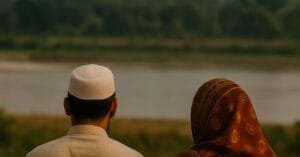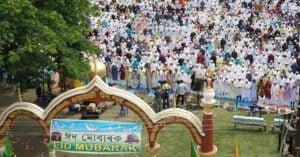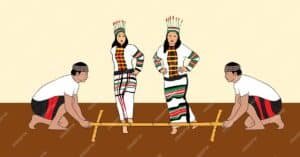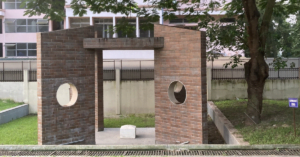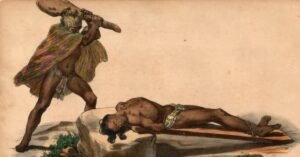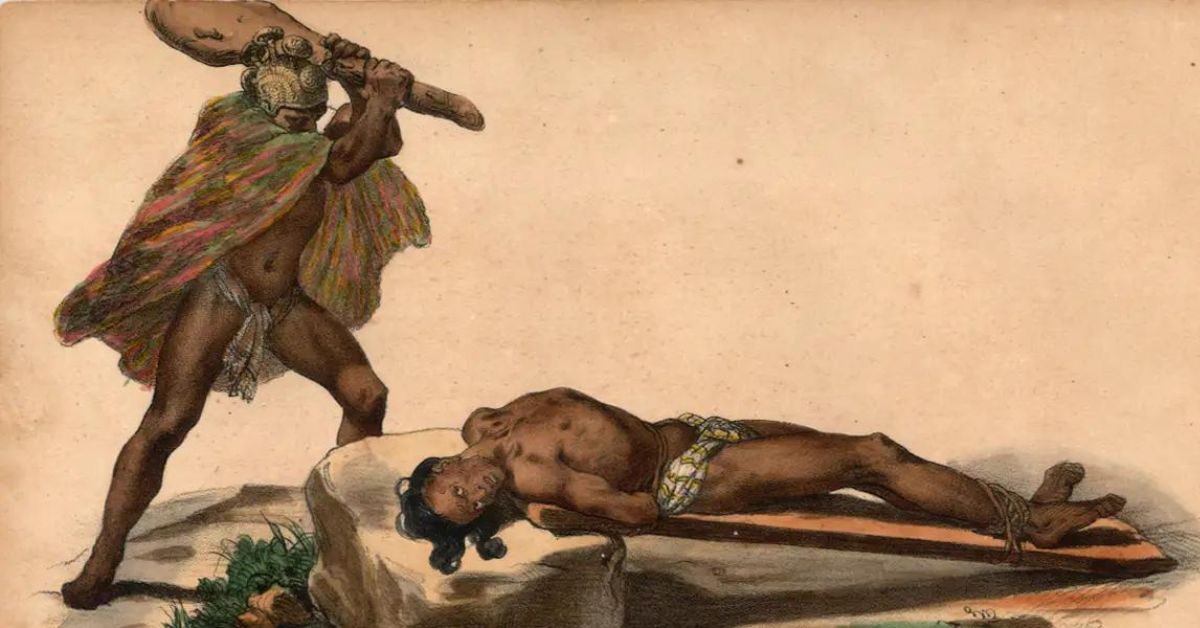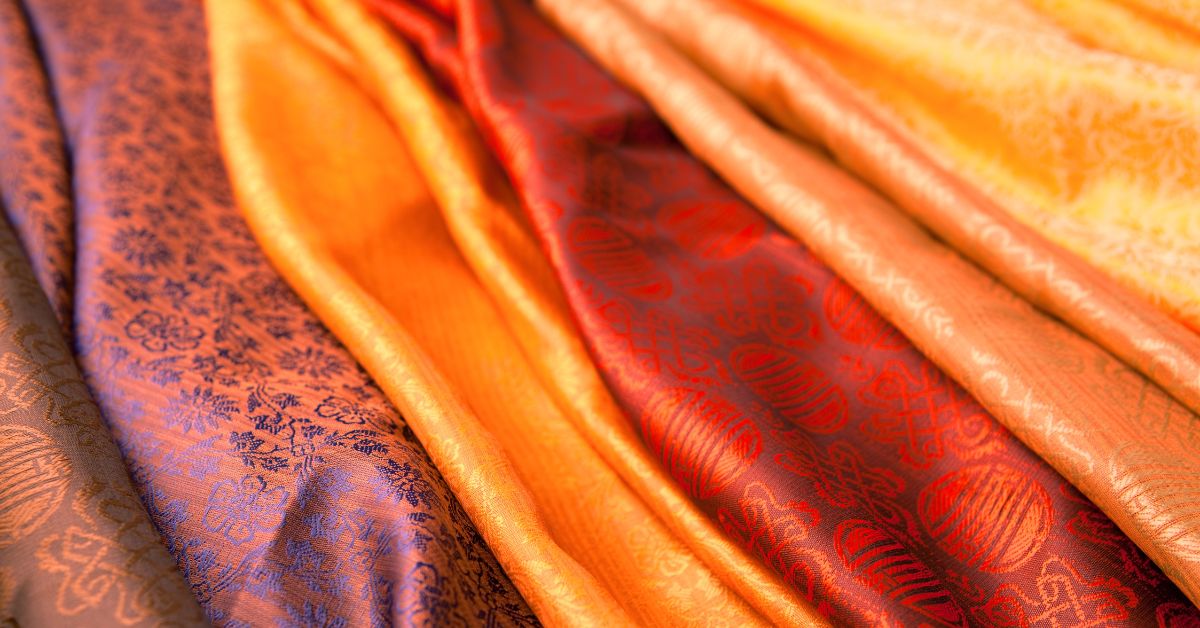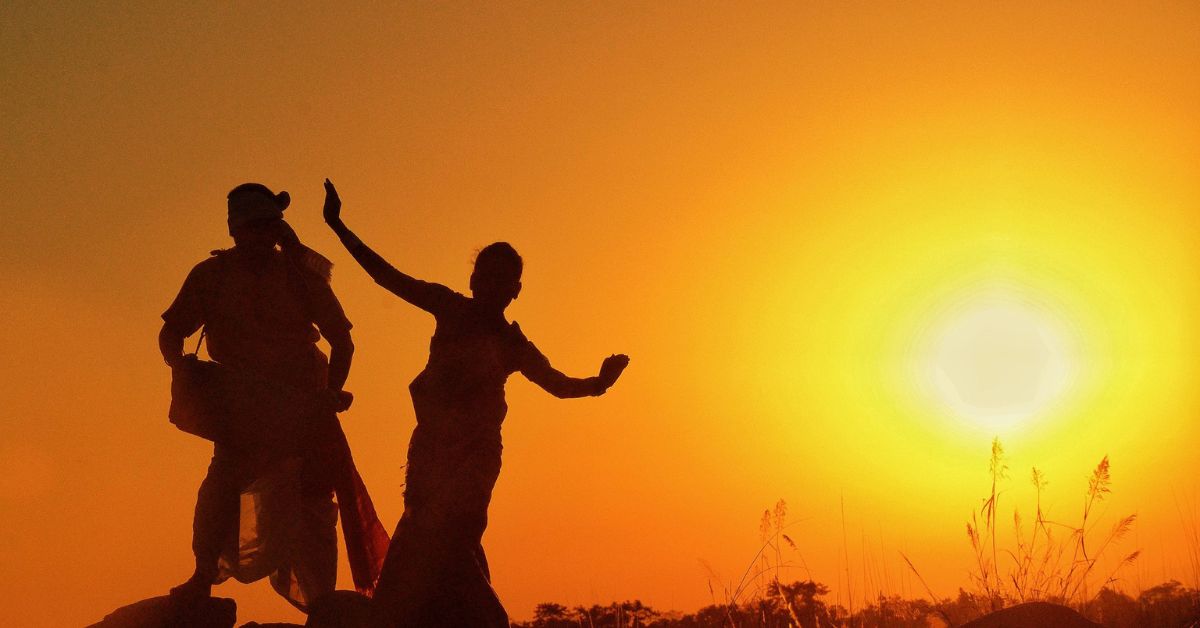Assam, home to over 10 million Muslims, accounts for more than 40% of its total population, making it the fifth largest state in India by Muslim population. According to the 2011 Census, Assam’s Muslim population stands at 1.07 crore. The Muslim community of Assam has a long history that dates back to the fourteenth century and religious places of Assamese Muslims are not a new phenomenon.
Throughout its history, the community has undergone significant transformations. Although Muslims were not the original inhabitants of the land, many have earned the right to call it their own through their actions and contributions. Furthermore, the community has made substantial contributions to culture, the struggle for freedom, as well as music and literature. This blog is about all those historical and religious places of Assamese Muslims that are frequented by many tourists.
Azan Faqir Dargah at Saraguri Chapari
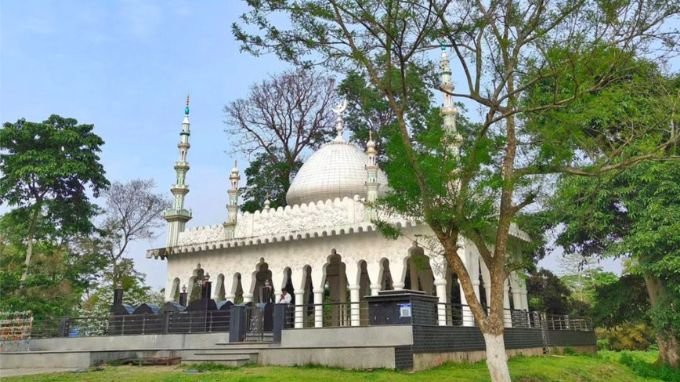
It is the most visited and popular religious places of Assamese Muslims. It has become a symbol of Hindu-Muslim unity in Assam as many Hindus also visit the dargah. The name “Azaan Faqir” is so common in Assam that the state of Assam is also sometimes referred as Sankar-Azaanor Desh (the land of Sankardev and Azaan Faqir).
Shah Milan, later known as Azan Fakir, is believed to have come to India from Baghdad. After visiting Ajmer and Delhi, where he joined the Chishti order, he traveled to Assam. His first stop in Assam was at the tomb of Ghyasuddin Auliya in Hajo, near Guwahati, where he learned Assamese.
He then moved to Gargaon, the capital of the Ahom kingdom, and eventually settled near the confluence of two rivers in Saraguri Chapari village, Sibsagar district.
Azan Fakir composed hundreds of zikirs—derived from the Arabic word ‘ziqr’ which means ‘remembering Allah’s name’—in Assamese. These zikirs, intended to spread Islam, were based on local folk songs (Deh Bicarer Geet) and Vaishnav Hindu devotional songs (Borgeet). Despite being a devout Muslim, Azan Fakir respected all religions, and many of his zikirs have a secular character. That is why, many Hindus still visit Azaan Faqir dargah and Zikirs are popular among Assamese Hindus.
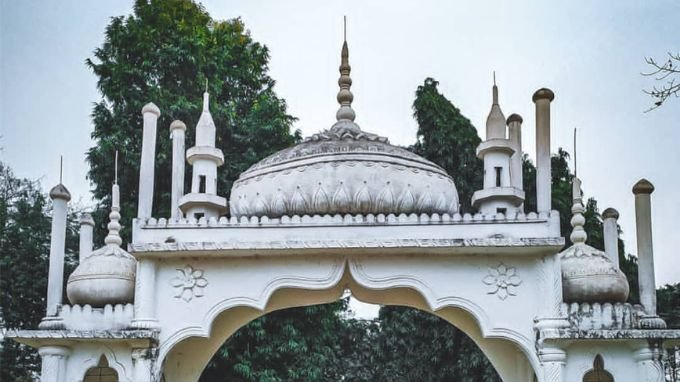
Over time, Azan Fakir gained many followers, arousing the enmity of Ahom official Rupai Baruah, who accused him of being a Mughal spy. The Ahom king ordered Azan Fakir’s eyes to be plucked out.
Once all these allegations were turned out to be false, later Ahom king granted land to Azan Fakir at Soraguri Chapari near Sibsagar and built a matha(doul like structure) for him. This site, on the Brahmaputra’s bank, became of the most historical and religious places of Assamese Muslims.
Patharughat Swahid Venue
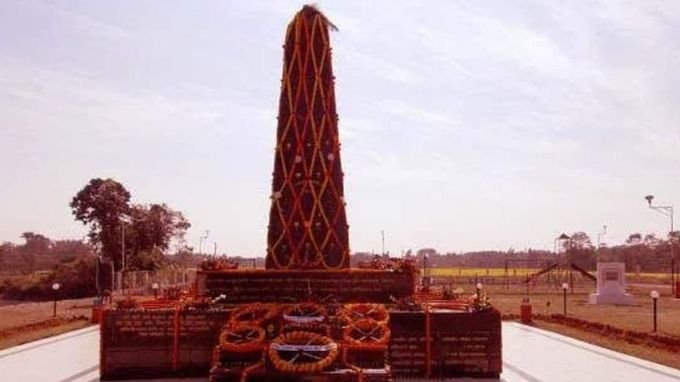
The Patharughat Uprising of 1894 is another example of unity between Hindus and Muslims in Assam. In that uprising which took place at a place called Patharughat in Darrang district of Assane on 28 January 1894, thousands of unarmed villagers (both Hindu and Muslims) revolted against the British to oppose the unjust increase in land revenue”. According to official records, as mentioned in the Darrang District Gazette 1905, edited by B.C. Allen, the number of casualties in the Patharughat incident was mentioned as 15 killed and 37 wounded. But, unofficial sources claim it was a much higher number. During this incident, the Hindus and Muslims have fought together, which displayed the camaraderie shared by the two communities in the State.
A memorial has been erected at the site to honor those who lost their lives in the incident, making it a significant historical site for both Assamese Muslims and Hindus. January 28 is observed in Assam as Martyrs’ Day to commemorate their sacrifice.
Panch Pir Dargah
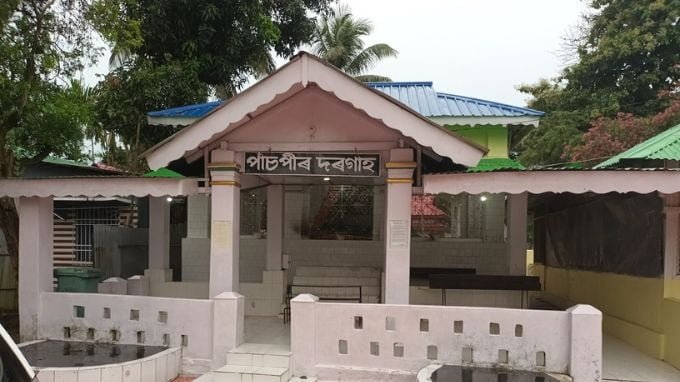
It is a Mazar Sharif of five Sufi Saints (panch pir) who accompanied Raja Ram Singh during his time of invasion to Assam (1662). This Dargah is the best example of religious harmony where all section of people irrespective of their religion pay visit with great respect.
Also known as “Pach Pir Mukam”, it is a pilgrimage site located in the district of Dhubri. The Pach Pirr Mukam is situated on the Brahmaputra River’s banks and covers around 120 acres. The site comprises several mausoleums, or dargahs, dedicated to the Panch Peer. The largest of these is the Dargah of Hazrat Shah Amanat, which is believed to contain the tomb of the leader of the Panch Peer.
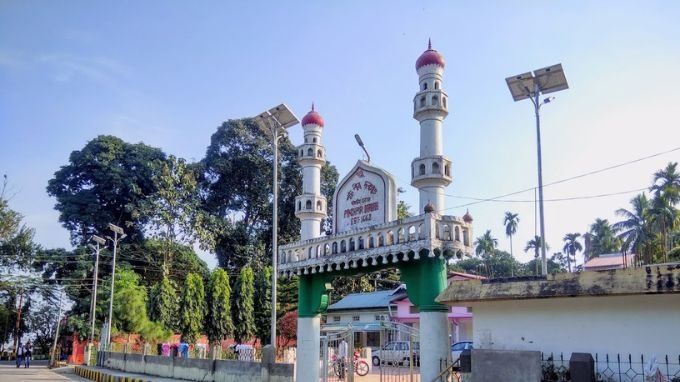
The complex also includes several other structures, including a mosque, a library, and a guesthouse. It is believed to have been visited by several prominent historical figures, including the Mughal emperor Aurangzeb and the Sufi saint Khwaja Bande Nawaz. Pach Pirr Mukam is a revered pilgrimage site for Assamese Muslims.
Panbari Masjid
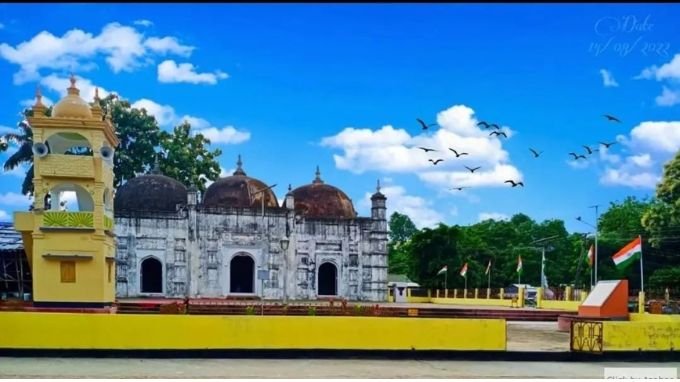
Panbari Masjid in Dhubri district, situated 25 km from Dhubri town, is considered the oldest mosque in Assam. Located in the Panbari area, it is the first mosque in Assam with three domes and is also known as Rangamati Mosque. It was originally built by the order of Hussain Shah, the Sultan of Bengal in 1498, with later renovations by Mir Jumla. Panbari “Pahar” is regarded as a sacred site and it is one of the most important religious places of Assamese Muslims in western Assam.

Bor Masjid and Horu Masjid
These two masjids are located at Jayantipur village in central Assam’s Nagaon district. Bor Masjid (meaning large mosque) was built around 1570. It is one of the oldest Mosques of Assam and was built even before the Jarna Masjid of Delhi or the Taj Mahal. The arch and other structures of this Mosque are built is style of typical islamic architecture, but it has a unique top (kalashi) which is like a Namghar (prayer hall of Hindu Assamese community).
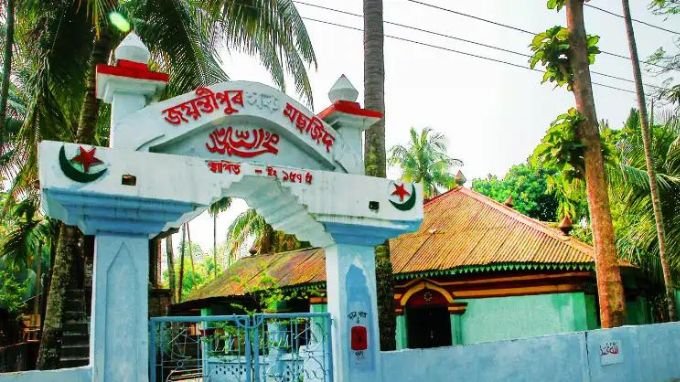
The other Mosque (called Horu Masjid) was also built in the same village a few years later and its roof too was built in the Vaishnavite style of architecture. These Mosques also have a lai khuta (the main pillat) like a Namghar. Thus, both these Mosques display an amalgamation of Islamic architecture and local architectural style. In the Bor Masjid, a canon from the Ahom era and several big brass utensils can still be found.
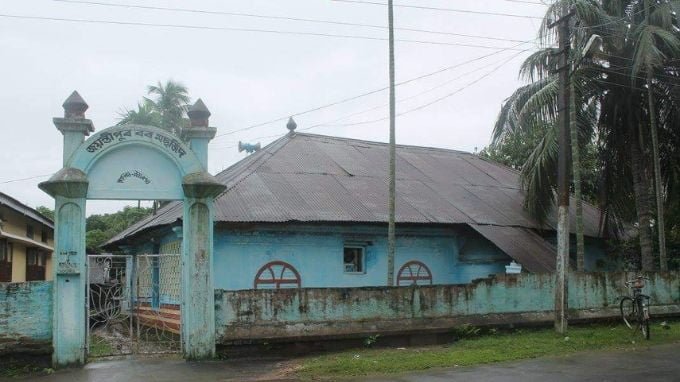
Poa Mecca
Poa Macca (Mecca) is a place of pilgrimage for the Muslims and is located at Hajo, a small town near Guwahati. It is 24 kms away from Guwahati. It is located atop a hill known as Garurachal hill. It is one of the most popular religious places of Assamese Muslims.
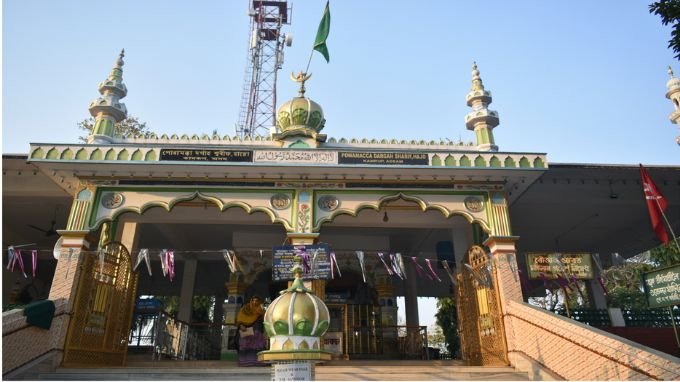
It is the tomb of saint Giasuddin Auliya (a popular sufi saint in Assam). It is believed that by offering prayers here the faithfuls gain one fourth of the spiritual enlightenment of what could be gained at Mecca. Hence the name – “poa” meaning one-fourth in Assamese.
It is also believed that to lay the foundation of this dargah, a poa (250 grams) of sand was brought from Mecca (the holy land of Islam in Saudi Arabia). That is why it is known as Poa Mecca.
It was built in 1657 AD by Sujauddin Muhammad Shah. However, it fell into ruin over time. It was later rebuilt by the British. Both hindus and muslims visit this dargah. Magh bihu celebration (a popular assamse festival) is done here by both assamese hindus and muslims alike. This is a shrine where not only the Muslims, but the Hindus also come to offer their prayers. The temple of Hayagriva Madhab is just adjacent to the mosque.
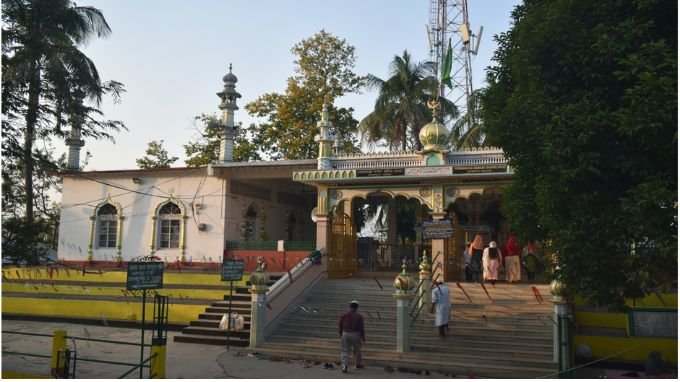
These places mentioned above are the popular Historical and Religious Places of Assamese Muslims. In addition, there are about 107 archaeological monuments and religious places related to Assamese Muslims. These needs to be preserved, developed and promoted. They can be converted to tourists spots.


